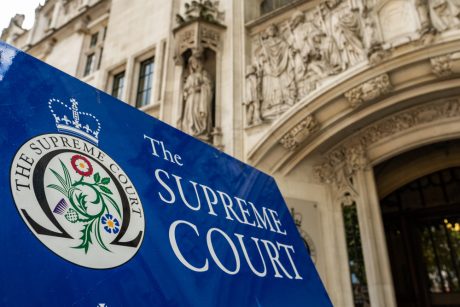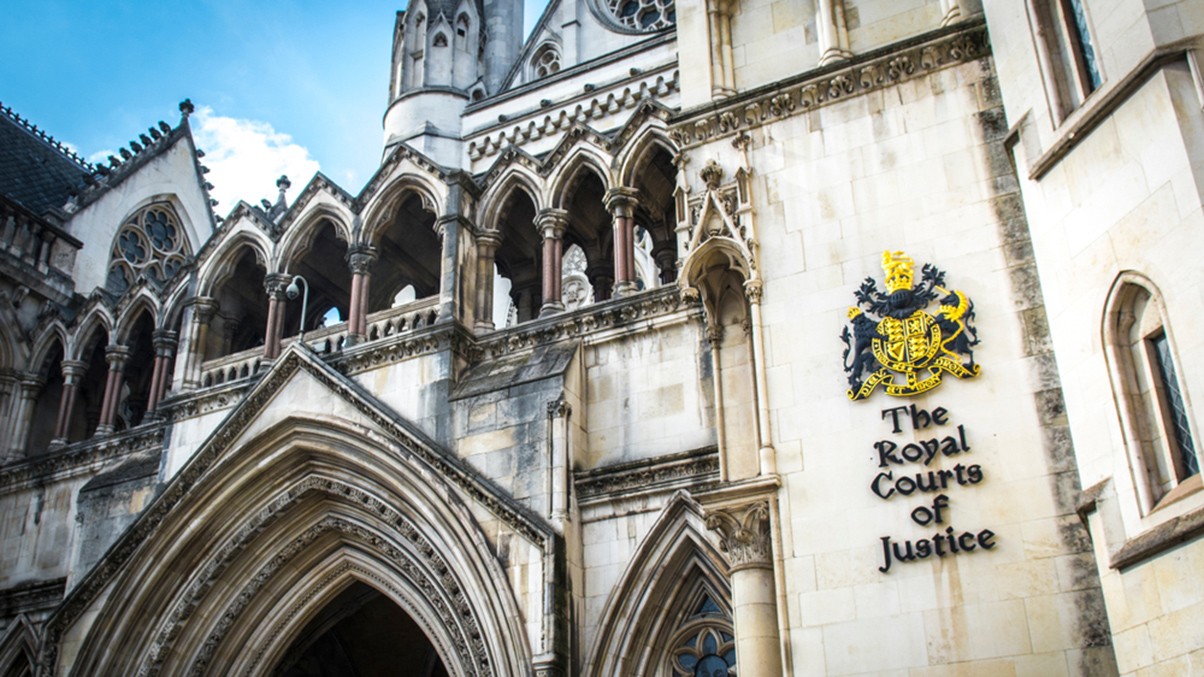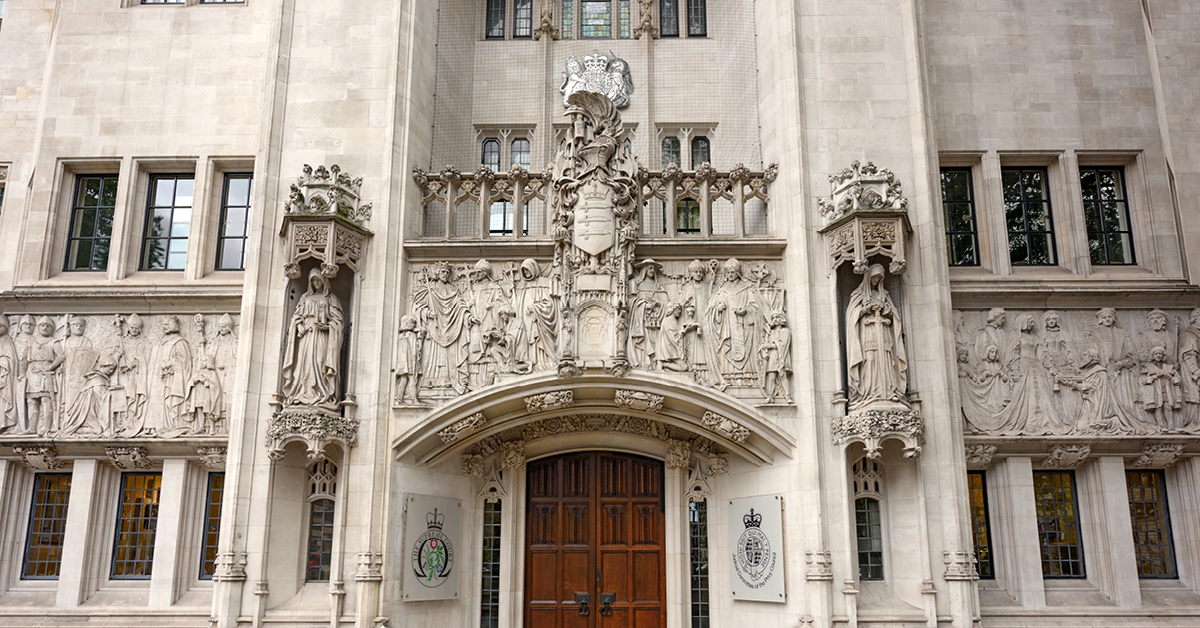The Supreme Court unanimously dismissed the appeal of Mrs Standish to what was, and remains, the largest ever reduction in a divorce award. Their judgment also provides clarification on how financial assets should be treated upon divorce.
On 30 April and 1 May 2025, the Supreme Court of the United Kingdom heard the appeal of Mrs Standish against the decision of the Court of Appeal to reduce her divorce award by the largest ever amount by percentage and value – 45%, a reduction from £45 million to £25 million. Lead Partner Sam Longworth, Second Partner Lucy Stewart-Gould and Associate Fiona Porter have acted for Mr Standish throughout.
On 2 July 2025, just two months after the hearing took place, the Supreme Court unanimously dismissed Mrs Standish’s appeal.
The Supreme Court has clarified and advanced the law in relation to what should, and should not, be subject to what is known as ‘the sharing principle’ – the concept that assets generated by the parties’ common endeavour during the currency of their marriage should be shared between them, and most usually shared equally.
Parties’ positions
A full account of the background to the case, and the High Court’s decision, can be found in our earlier article summarising the Court of Appeal judgment.
Up until 2017, all of Mr Standish’s wealth, aside from two joint bank accounts and the former matrimonial home (a c.£20m property funded by Mr Standish’s wealth but purchased in the joint names of the parties), was held in his sole name. In 2017, as part of a tax planning exercise Mr Standish transferred c.£80 million to Mrs Standish (‘the 2017 assets’) by agreement with the intention and expectation that Mrs Standish would settle the transferred assets into a trust for the benefit of their children. Mrs Standish did not transfer the assets into trust but instead commenced divorce proceedings in April 2020, at which point Mr Standish’s pre-martial assets remained held in her name.
At the time of the first instance hearing in May 2022, the total value of the assets was approximately £130m of which the 2017 transferred assets represented c.£80m.
In the High Court and Court of Appeal Mrs Standish argued that the assets had moved from being Mr Standish’s non-marital property to her non-marital property. She stated that the only reason they were available for sharing was because she had offered to do so but that the Court could not go beyond the share of 50/50 which she had offered.
In the Supreme Court Mrs Standish argued that the transfer to her in 2017 ‘matrimonialised’ the assets and therefore made them available for sharing. That being the case, she argued that they should presumptively be shared 50/50.
Throughout the proceedings up to and including in the Supreme Court, Mr Standish argued that the 2017 assets were his non-marital property, as the source of the funds were attributable to his pre-marital endeavour. The transfer to Mrs Standish did not alter their non-marital status. These assets should therefore not be subject to the sharing principle. In the alternative, if the assets did become marital as a result of the transfer they should be shared unequally to take account of their non-marital source, which was the magnetic feature of the case.
Mr Standish’s position throughout has been that an award of £25m represented the correct and fair outcome to the case.
High Court decision
Mr Justice Moor found that the 2017 transfer from Mr Standish to Mrs Standish ‘matrimonialised’ the 2017 assets and made them available for sharing. However, he agreed with Mr Standish that the pre-marital source of the assets was a significant consideration and decided that, overall, the appropriate division of the 2017 transferred assets should be 40% to Mrs Standish and 60% to Mr Standish to account for the source of those assets (namely Mr Standish’s pre-marital endeavour).
The overall division of the total assets was 34% to Mrs Standish and 66% to Mr Standish, providing for Mrs Standish to receive a sum of £45m. This judgment (also addressed in more detail in our earlier article), was appealed by Mrs Standish, and thereafter cross appealed by Mr Standish.
Court of Appeal
The appeals were heard by Lord Justice Moylan, Lady Justice King and Lord Justice Phillips for two days in the Court of Appeal in November 2023. Mr Standish was successful in his appeal: the Court of Appeal determined that the transfer to Mrs Standish did not ‘matrimonialise’ the 2017 assets and, as a result, reduced her sharing entitlement by 45% to £25m, being 50% of the assets which the Court of Appeal found to be matrimonial.
In its unanimous judgment the Court of Appeal found that:
- The transfer of the 2017 assets by Mr Standish did not ‘matrimonialise’ the assets. The key consideration was the source of those assets and the fact that the endeavour which had generated them was pre-marital.
- A portion of the 2017 assets was marital, this being attributable to endeavour during the short time Mr Standish worked during the marriage and prior to retirement in 2007. This portion was subject to the sharing principle.
- The first instance judge had erred in his division of the 2017 assets. Instead of allowing an arbitrary (and overly generous) 40%, he should have assessed what of those 2017 assets could broadly be attributed to the endeavour during the marriage (i.e. in) and applied the sharing principle only to that portion.
Taking this approach, the Court of Appeal found 75% of the assets remained Mr Standish’s non-matrimonial property, with 25% of the assets being marital and subject to the sharing principle. Mrs Standish’s sharing claim was assessed to be £25 million.
Mrs Standish appealed this decision to the Supreme Court, and permission was granted on 17 October 2024.
The Supreme Court – principles
The appeal was heard by the President Lord Reed, Lord Lloyd-Jones, Lord Burrows, Lord Stephens and Lady Simler on 30 April and 1 May 2025. Lord Burrows and Lord Stephens wrote the judgment with which the Justices were in unanimous agreement.
The Supreme Court upheld the Court of Appeal decision and dismissed Mrs Standish’s appeal. In doing so, the Supreme Court found that the proper application of the sharing principle to the facts of this case saw Mrs Standish receive an award of £25m, the amount Mr Standish had contended for from the point of the initial hearing before Mr Justice Moor.
But the Supreme Court also took the opportunity to:
- advance the legal principles of the sharing principle,
- confirm that the sharing principle does not apply to non-matrimonial property, and
- provide new guidance as to regarding the circumstances in which non-marital property may become matrimonial and therefore subject to the sharing between a couple on divorce.
The sharing principle and matrimonial property
The sharing principle applies to matrimonial property. There is a conceptual distinction between matrimonial and non-matrimonial property: matrimonial property compromises the fruits of the marriage partnership, it reflects the marriage partnership. The ownership of an asset at the point of divorce (‘title’) is not determinative and an award based on title would run counter to the discrimination and sharing principles.
The sharing of matrimonial property should normally be on an equal basis. Although there can be justified departures from that, equal sharing is the appropriate and principled starting position. Once non-matrimonial property is excluded, much of the justification for not applying equality in sharing fades away.
Non-matrimonial wealth
Agreeing with the position put forward on behalf of Mr Standish, the Supreme Court determined that sharing does not apply to non-marital property. This finding provides welcome certainty and ends speculation in earlier cases that it was theoretically possible to share non-marital property. It is now beyond doubt that access to non-marital property is strictly limited to claims on the basis of ‘need’ and ‘compensation’. There is no legal right to share property found to be non-matrimonial.
Matrimonialisation
Non-matrimonial property may become matrimonial property (i.e. be ‘matrimonialised’) and therefore available for sharing in certain circumstances.
The Supreme Court rejected Moylan’s suggestion in Standish (para 163) that the concept of matrimonialisation should be applied narrowly. It was found that matrimonialisation should not be applied narrowly or widely. Rather, what matters is how the parties have dealt with the non-marital assets and whether this shows that, over time, they have treated the asset as shared. This is central in determining whether it is fair to regard that property as having been matrimonialised.
The new test for ‘matrimonialisation’ can be summarised as follows:
Matrimonialisation occurs where there is intention by the contributor to share non-marital property, coupled with treatment by the parties of this non-marital property as shared over time.
The passage of time is relevant to demonstrating a settled intention that an asset be treated as shared not withstanding its non-marital origin. Consistent with this test the Supreme Court confirmed that transfers between parties for the purpose of a tax scheme are insufficient to render an asset marital, as the intention of the transferor is to mitigate tax and not to share them with their spouse. Accordingly, absent some further compelling evidence, the transfer alone in those circumstances is not ‘matrimonialisation’.
This new test draws upon Lord Nicholls’ comments in Miller/McFarlane regarding the relevance of the way the parties organise their financial affairs, and Lord Justice Wilson’s reference in K v L to the necessity of acceptance by the contributor of the non-marital asset that the asset should be treated as shared.
Such a test acts to protect both parties from opportunistic presentations at the point of divorce that either:
- an asset should be treated as marital when it was never intended to be the position or treated as such (i.e. where it was transferred solely with reference to a tax planning exercise as in the case of Standish); or
- a matrimonial asset should be treated as non-matrimonial because of its source despite the clear intentions and actions of the parties to the contrary during the marriage (e.g. the use of non-matrimonial funds placed into a joint bank account available and used by both parties over many years during the course of their marriage).
The Supreme Court outcome
Applying this test to the facts of Standish v Standish, the Supreme Court found that the 2017 transfers did not ‘matrimonialise’ those assets as the intention and purpose of the transfer was to benefit the children of the family in the context of a tax mitigation scheme, not to share the assets with Mrs Standish.
In light of this finding, there was no reason to interfere with the Court of Appeal’s conclusion that the 2017 assets comprised of a mixture of matrimonial (through Mr Standish’s endeavour during the relationship) and non-matrimonial (pre-acquired) wealth. The matrimonial (found to be 25%) should be shared equally and the non-matrimonial property comprising 75% should not be shared.
Going forward, if a party wishes to share in non-marital assets they will need to demonstrate that the other spouse intended to share those assets notwithstanding their non-marital nature and that they have been treated as shared by the parties during their marriage. The passage of time is a relevant indicator of intention to share, i.e. the longer the asset is treated as shared by the parties the stronger the evidence of a settled intention to share will be.
The Supreme Court has made clear that proportionality is a relevant consideration in these arguments and fairness dictates that expense should not be expended disproportionately on arguments regarding de minimis non-marital assets.
Commentary
Sam Longworth (Lead Partner for Mr Standish):
“We are very grateful for the speed at which the Supreme Court reached this unanimous decision to reject the appeal of Mrs Standish against the largest ever reduction by the Court of Appeal to a divorce award. In February 2021, Mr Standish offered to settle this case for £25m. The Court of Appeal in 2024 acceded to his appeal of the order of £45m made in 2022, whilst rejecting Mrs Standish’s attempts to achieve an even greater award at that time.
The Supreme Court has now upheld the Court of Appeal’s determination of £25m, whilst accepting our arguments that the sharing principle should only apply to marital (as opposed to non-marital) assets. The Supreme Court has also provided essential guidance as to when assets which do not have an originating connection to the marriage partnership should be considered marital. This guidance will give the courts a clear framework to ensure individuals cannot benefit from running false arguments as to whether they had or had not agreed to share certain assets during the currency of their relationship.”
Lucy Stewart-Gould (Second Partner for Mr Standish):
“The team at Stewarts are pleased to have secured for our client a judgment which fairly reflects the fact that the majority of the wealth in this case was non-marital, having been generated almost entirely by our client’s work prior to the marriage. The Court confirmed that title alone is no determiner of how assets should be divided upon divorce; such an approach risks discrimination and is contrary to fairness which underpins the ‘sharing’ principle. Title alone is insufficient evidence to permit a party to share in a non-marital asset, what is required is an intention to share and treatment of the asset as shared. On the proper analysis of the facts of this case, there was neither.
Divorcing couples across England and Wales now have clear guidance on how their assets will be categorised upon divorce.”
Representation
Stewarts instructed Tim Bishop KC, Rebecca Bailey-Harris and Tom Harvey of 1 Hare Court to represent Mr Standish in the Supreme Court. Giles Richardson KC of Serle Court and Emma Chamberlain OBE of Pump Court Tax Chambers are also instructed by Stewarts in this matter.
You can find further information regarding our expertise, experience and team on our Divorce and Family page.
If you require assistance from our team, please contact us or alternatively request a call back from one of our lawyers by submitting this form.
Subscribe – In order to receive our news straight to your inbox, subscribe here. Our newsletters are sent no more than once a month.






